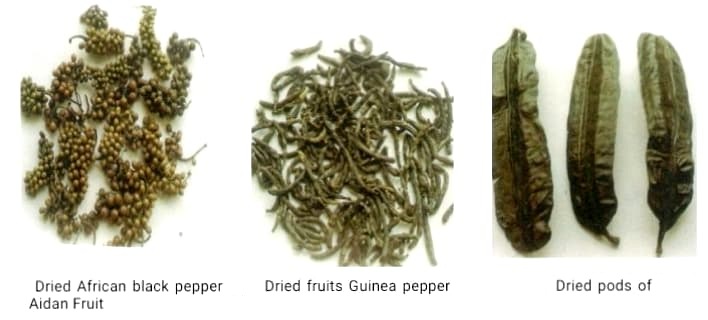Bioorganic and Medicinal Chemistry Reports
A scientific open access journal in the field of Bioorganic and Medicinal ChemistryLATEST ARTICLES
Proximate, phytochemical and sensory evaluations of African Black Pepper (Piper guineense), Guinea Pepper (Xylopia aethiopica) and Aidan Fruit (Tetrapleura tetraptera)spiced drinks

This study evaluated the proximate and phytochemical properties of African black pepper (Piper guineense), Guinea pepper (Xylopia aethiopica) and Aidan fruit (Tetrapleura tetraptera) spices and also assessed the level of acceptability of the drinks prepared using these spices. Pineapple, zobo and kunuzaki drinks enriched with African black pepper, guinea pepper and aidan fruitandginger/garlic (control) were produced. Proximate and phytochemical properties of the spices and sensory evaluations of the spiced drinks were determined. The results of the proximate compositions of the spices showed that aidan fruit recorded the highest values in moisture (11.33%), ash (8.53%) and protein (9.78%). African black pepper recorded highest values in fat (9.32%) and carbohydrate (58.95%) while Guinea pepper recorded highest values in fibre (19.60%). African black pepper recorded the lowest values in moisture (9.45%), ash (6.83%), Fibre (8.64%) and protein (6.82%). The phytochemical properties of the spices showed that African black pepper recorded the highest values in alkaloids (1.77%), tannins (1.85%), saponins (0.21%) and flavonoids (0.47%) while Guinea pepper recorded the highest values in cyanide (0.05%) and phenol (3.81%) and Aidan fruit recorded the lowest values for all the phytochemical determined. The sensory evaluation showed that sample B (stimulating pineapple drink enriched with uziza, uda and oshosho) was most preferred by the panelists. Findings from this study have clearly shown that these spices can be used in production of various drinks with comparable nutritional qualities and general acceptability to the already existing drinks.
DOI http://oi.org/10.25135/bmcr.35.2505.3539 Keywords African black pepper Guinea pepper Aidan fruit zobo kunuzaki Available online: August 27, 2025 DETAILS DOWNLOAD PDF © ACG Publications. All rights reserved.